CES 2006: Motherboards, Memory, Cooling, and a Few Surprises
by Wesley Fink & Jarred Walton on January 11, 2006 12:05 AM EST- Posted in
- Trade Shows
ASUS
The bread and butter of ASUS has always been motherboards, and it comes as little surprise that they have products using just about every conceivable chipset and for every market segment.
At the high-end, they have the workstation class P5WDG2-WS motherboard using the 975X chipset and sporting dual PCI-X slots as well as dual PCIe X16 (with X8 data connections) slots for CrossFire.
They're also working on "Digital Home" uATX boards for Pentium D (P5LD2-VM DH) and Core Duo (N4L-VM DH), which naturally means that they're Intel Viiv ready. Viiv has been a major point at most of the motherboard locations, and it appears to be the HTPC equivalent of Centrino: a mostly pre-existing set of technologies that are now being grouped and branded under a single name. Like Centrino, the Viiv name will require the use of an Intel processor (dual core Pentium D or Yonah/Core Duo) and chipset. The push into the consumer space is often more about marketing than technological prowess, and Viiv will be leading the way. Don't get us wrong - it's not a terrible platform, but honestly, it doesn't appear to add anything new to the market; it's just Intel's take on HTPC.
We found their Asus A8R-MVP to be a good quality ATI CrossFire solution at a great price, and they're looking to improve on the design with the RD580-based follow-up, the A8R32-MVP. The RD580 chipset will be the first major chipset to support true dual X16 slots off of the Northbridge, and it looks to be one of the more exciting chipsets of the coming year. The layout has also been modified from the original MVP to improve the support for running two large GPUs, with two slots separating the X16 slots. Overclocking should be even better than the already impressive RD480-based boards. It's a bit surprising that the design is still targeting the mainstream market rather than the high-end, since in every other way, this appears to be a great high-end board.
ASUS was also one of the few locations to have a K8T890 board on display, their A8V-E SE. While the features and specifications on the board appear decent, it's difficult to find a place for the board in an already crowded market. Compared to nForce4 Ultra boards, the lack of SATA 3.0 Gbps support or any other standout features seems to indicate that this is largely a value-oriented board. As long as the price and performance are right, though, there will likely be a few willing buyers.
The bread and butter of ASUS has always been motherboards, and it comes as little surprise that they have products using just about every conceivable chipset and for every market segment.
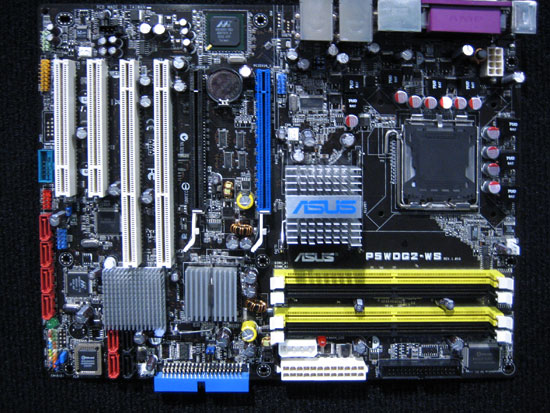
At the high-end, they have the workstation class P5WDG2-WS motherboard using the 975X chipset and sporting dual PCI-X slots as well as dual PCIe X16 (with X8 data connections) slots for CrossFire.
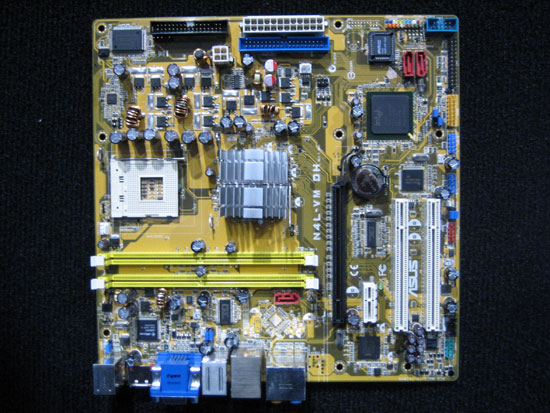
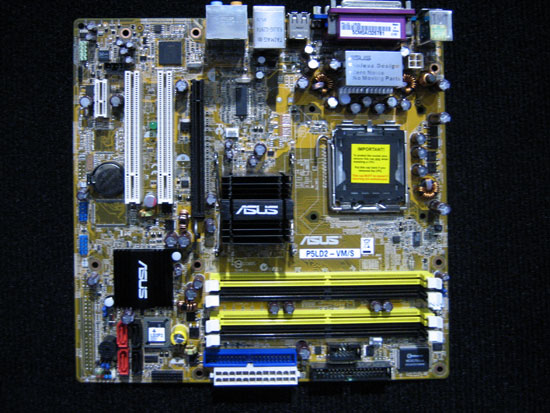
They're also working on "Digital Home" uATX boards for Pentium D (P5LD2-VM DH) and Core Duo (N4L-VM DH), which naturally means that they're Intel Viiv ready. Viiv has been a major point at most of the motherboard locations, and it appears to be the HTPC equivalent of Centrino: a mostly pre-existing set of technologies that are now being grouped and branded under a single name. Like Centrino, the Viiv name will require the use of an Intel processor (dual core Pentium D or Yonah/Core Duo) and chipset. The push into the consumer space is often more about marketing than technological prowess, and Viiv will be leading the way. Don't get us wrong - it's not a terrible platform, but honestly, it doesn't appear to add anything new to the market; it's just Intel's take on HTPC.
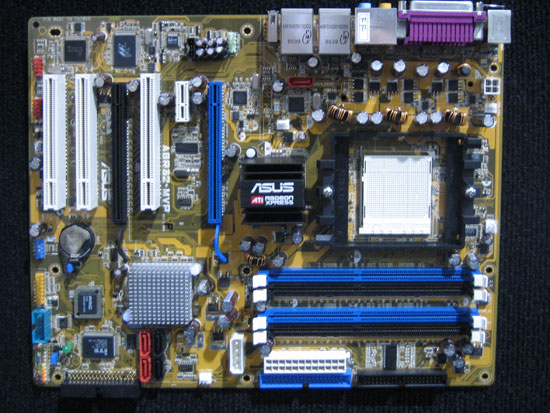
We found their Asus A8R-MVP to be a good quality ATI CrossFire solution at a great price, and they're looking to improve on the design with the RD580-based follow-up, the A8R32-MVP. The RD580 chipset will be the first major chipset to support true dual X16 slots off of the Northbridge, and it looks to be one of the more exciting chipsets of the coming year. The layout has also been modified from the original MVP to improve the support for running two large GPUs, with two slots separating the X16 slots. Overclocking should be even better than the already impressive RD480-based boards. It's a bit surprising that the design is still targeting the mainstream market rather than the high-end, since in every other way, this appears to be a great high-end board.
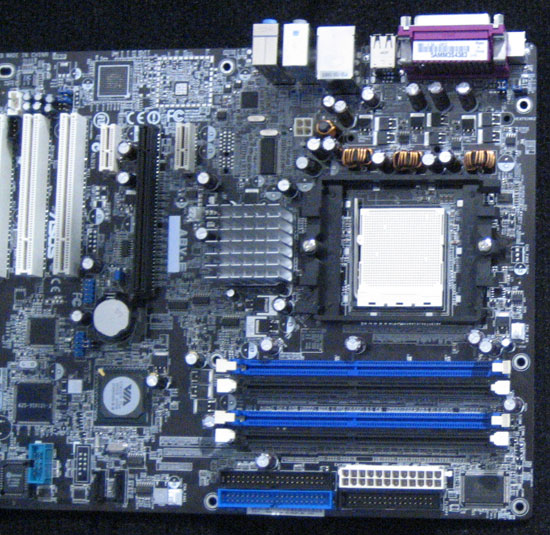
ASUS was also one of the few locations to have a K8T890 board on display, their A8V-E SE. While the features and specifications on the board appear decent, it's difficult to find a place for the board in an already crowded market. Compared to nForce4 Ultra boards, the lack of SATA 3.0 Gbps support or any other standout features seems to indicate that this is largely a value-oriented board. As long as the price and performance are right, though, there will likely be a few willing buyers.










36 Comments
View All Comments
semo - Wednesday, January 11, 2006 - link
am i the only one annoyed of the fact that the graphics card is almost always ignored when it comes to exotic cooling.why no phase change cooling option for you graphics card? and not just the gpu i'm talking about the memory aswell. pc ram may not get very hot but gddr does.
Puddleglum - Wednesday, January 11, 2006 - link
Check this image: http://images.anandtech.com/reviews/tradeshows/200...">http://images.anandtech.com/reviews/tra...ows/2006...Turin39789 - Wednesday, January 11, 2006 - link
Now that just needs to drop to $299 and we'll be all setTurin39789 - Wednesday, January 11, 2006 - link
This was the problem I saw with the ocz phase change setup. It seemed very nice for extreme cpu speeds, but it would be nice if they offered an expanded system that had cooling for other system componentsJynx980 - Wednesday, January 11, 2006 - link
Can you imagine being the one responsible for getting that $50,000 Brightside TV to the show and then f-cking it up?!"Oooooh, sorry guys, my bad."
JustAnAverageGuy - Wednesday, January 11, 2006 - link
OUCH! That's gotta suck.
JarredWalton - Wednesday, January 11, 2006 - link
Supposedly was the shipping company. That's a hefty insurance bill, I'd wager. It was pretty awesome to see true black from such a crisp LCD, though. They had Doom 3 shots and some other stuff running, and it was all very impressive looking. Hopefully, we can see something get into the market like this in the next year!DigitalDivine - Wednesday, January 11, 2006 - link
i like the tiny dualcor computer. if it has a vga out and usb in, this will be a winner and i would get one as fast as i can.Wesley Fink - Wednesday, January 11, 2006 - link
According to the Specifications, the DualCor has 3 USB 2.0 ports (2 type A and 1 type B), a mini VGA port, and a compact Flash slot. It also has both 1GB of DDR2 Memory and 1GB of Flash Memory. It looks like your wishes are all there.JarredWalton - Wednesday, January 11, 2006 - link
They had it hooked to an LCD, but I don't know if it can run non-native resolutions or not. (Probably a driver update will be required, as at the show it was only outputting 800x480.) It looks like the unit is in early Beta to me, but it's still pretty interesting. Getting 40GB of easily accessible storage for your PDA is nice.